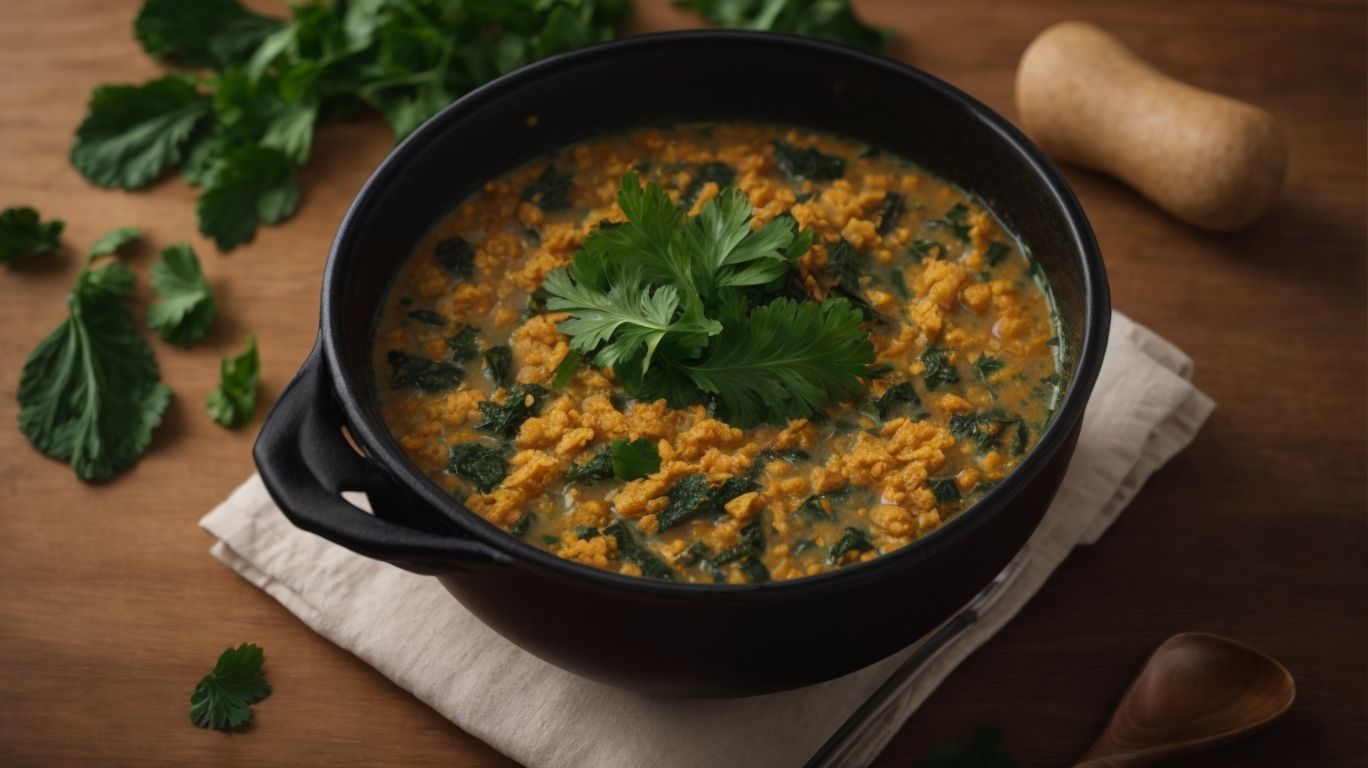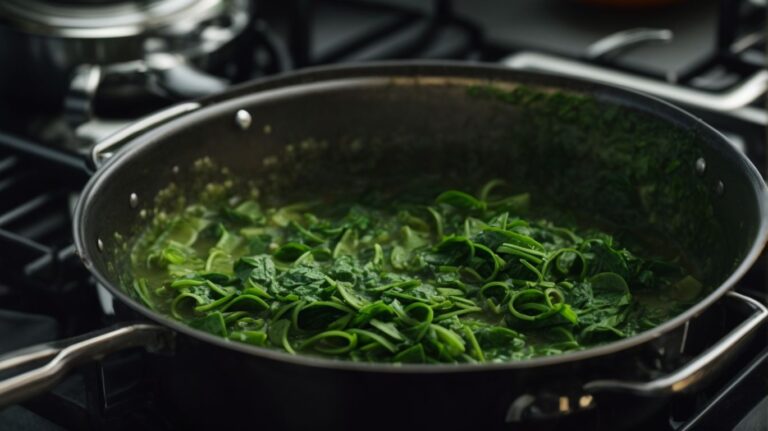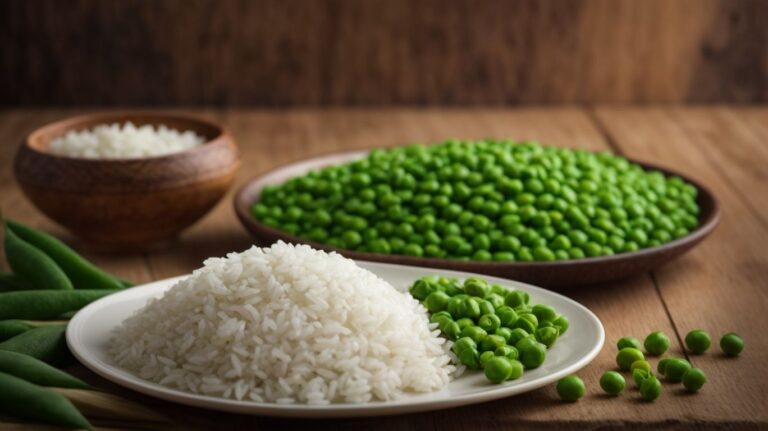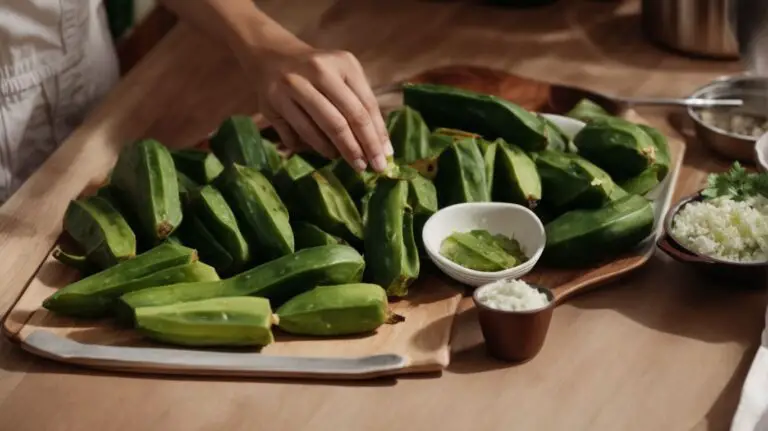How to Cook Egusi Soup With Ugu Leaf?
Looking to add a delicious and nutritious dish to your recipe collection?
Explore Egusi Soup with Ugu Leaf, a mouthwatering Nigerian delicacy.
Learn about Egusi Soup, the key ingredient – Ugu Leaf, and the necessary ingredients and steps to prepare this dish.
Discover how to prepare Egusi seeds, add Ugu Leaf, and get tips on serving and pairing to elevate your dining experience.
Key Takeaways:
What is Egusi Soup?
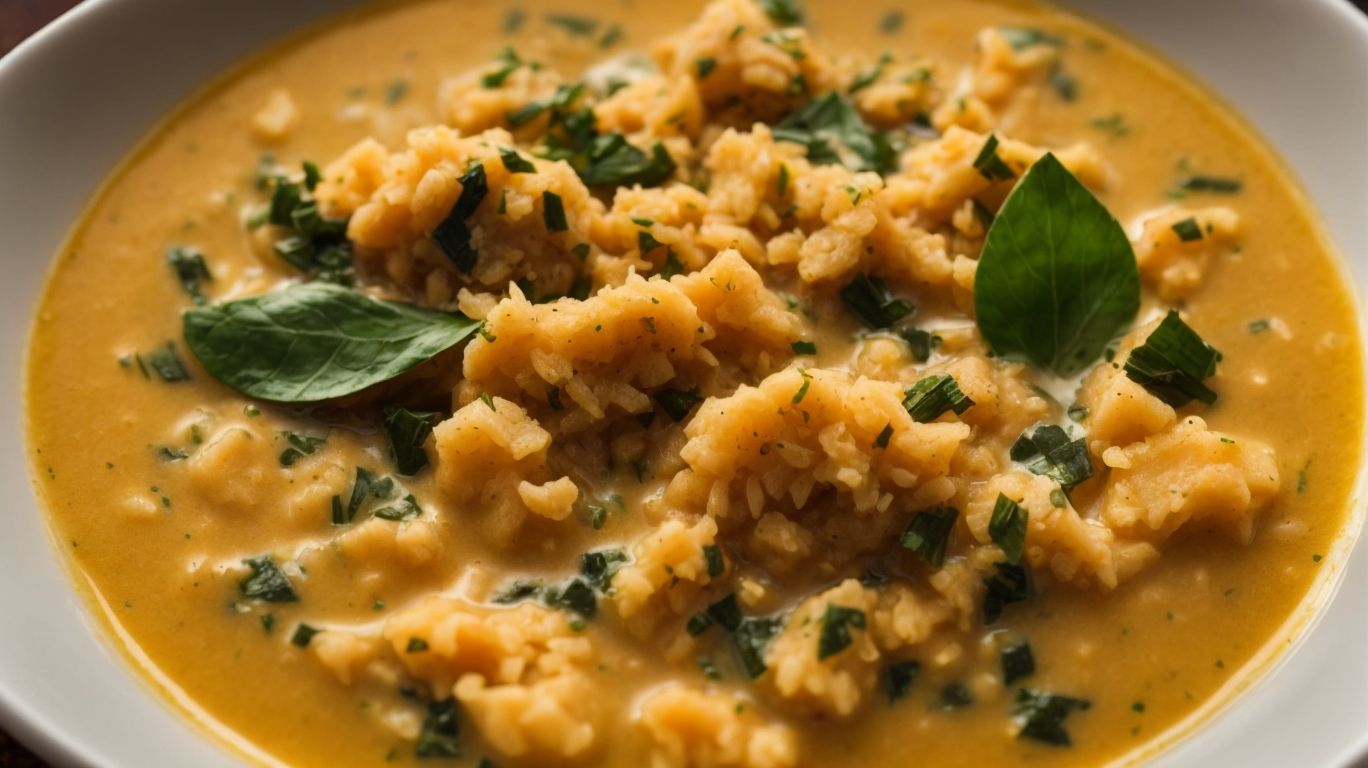
Credits: Poormet.Com – Logan Nguyen
Egusi Soup, a traditional Nigerian delicacy, is a flavorful dish known for its rich aroma and unique texture.
It is a staple in Nigerian cuisine, often enjoyed during special occasions and gatherings with family and friends.
The soup is made from ground melon seeds, cooked with an array of spices, vegetables, and sometimes meat or fish. This mix of ingredients creates a thick and hearty broth that is both satisfying and comforting to eat.
One of the key features of Egusi Soup is its versatility—it can be tailored to suit individual preferences, with variations in ingredients and seasonings across different regions of Nigeria.
What is Ugu Leaf?

Credits: Poormet.Com – Samuel Smith
Ugu Leaf, a common vegetable in Nigerian cuisine, is known for its nutritional value and slight bitterness.
It is a staple ingredient in many traditional dishes, adding a depth of flavor that complements various stews and soups. The unique touch of bitterness Ugu Leaf brings helps balance and enhance the overall taste of the dish.
Plus its culinary uses, Ugu Leaf is packed with essential nutrients like vitamins A, C, and K, as well as iron and calcium, making it a valuable addition to a healthy diet.
Whether used fresh or cooked, this versatile leafy green not only adds a pop of vibrant color to dishes but also contributes a host of health benefits to any meal.
Ingredients for Egusi Soup with Ugu Leaf
To prepare Egusi Soup with Ugu Leaf, essential ingredients include Egusi seeds, Ugu leaf, palm oil, meat, and a variety of vegetables.
Egusi seeds, also known as melon seeds, form the base of this traditional Nigerian dish. They are ground into a fine powder to create a thickening agent with a nutty flavor that adds richness to the soup.
Ugu leaf, a nutrient-rich dark green leafy vegetable, not only enhances the nutritional value of the soup but also brings a unique flavor profile to the dish.
Palm oil, with its distinct color and flavor, is essential for that authentic Egusi Soup taste, providing a rich and aromatic base for the other ingredients to meld together.
Meat, whether beef, goat, or chicken, adds protein and depth to the dish, creating a hearty and filling meal.
The variety of vegetables such as tomatoes, onions, and peppers, contribute freshness, color, and additional nutrients to complete this flavorful and wholesome soup.
Egusi Seeds
Egusi seeds are a vital component of the Egusi Soup recipe, known for their nutty flavor and ability to enhance the dish’s aroma.
When blended with other spices and ingredients, Egusi seeds impart a rich, earthy taste to the soup, adding depth and complexity to each spoonful. Their natural oils contribute to the dish’s velvety texture, creating a satisfying mouthfeel that complements the various vegetables and meats typically found in the recipe.
The unique flavor profile of Egusi seeds also makes them versatile for different culinary interpretations, allowing cooks to experiment with various combinations to suit their preferences. Whether ground finely or left slightly chunky, these seeds play a crucial role in achieving the authentic taste of Egusi Soup.
Ugu Leaf
Ugu Leaf, after proper preparation, adds vibrant color and essential nutrients to the Egusi Soup, elevating its nutritional value.
When preparing Ugu Leaf for the soup, it is crucial to clean them thoroughly to remove any dirt or impurities. The leaves are then cut into thin strips, giving a beautiful green color that complements the overall appearance of the dish. Not only does it enhance the visual appeal, but Ugu Leaf is also packed with nutrients like vitamins A, C, and K, as well as iron and potassium, adding a healthy element to the soup. Ensuring proper handling and cooking techniques preserve these valuable nutrients, making Ugu Leaf a standout ingredient in traditional Nigerian cuisine.”
Meat or Fish
Meat or fish, a key element in the Egusi Soup recipe, contributes to the dish’s rich taste and makes it a quintessential Nigerian delicacy.
Both meat and fish play a pivotal role in elevating the flavor profile of this traditional Nigerian dish. The use of meat adds depth and savory notes to the soup, while the inclusion of fish brings a unique umami richness.
In Nigerian culture, the incorporation of meat or fish in recipes is a symbol of abundance and celebration. Egusi Soup is often prepared during festive occasions, reflecting the cultural importance of this dish.
Regarding choosing the type of meat or fish for your Egusi Soup, the options are plentiful. From succulent chunks of beef to flavorful stockfish or dried fish, each ingredient lends its own distinct taste and texture to the recipe.
Palm Oil
Palm oil, when used in the right proportion, adds a distinct aroma and rich color to the Egusi Soup, enhancing the overall appeal of the dish.
Moreover,
- palm oil plays a crucial role in creating a velvety puree consistency in the soup, blending seamlessly with ground melon seeds, vegetables, and spices. It acts as a binder, bringing together all the flavors and textures harmoniously. Not only does it contribute to the creamy texture, but it also imparts a deep earthy flavor that is quintessential in traditional African cuisine.
- The use of palm oil not only elevates the flavor profile but also enhances the visual appeal of the dish. The rich red-orange hue it imparts to the soup creates a vibrant and appetizing presentation, enticing the senses even before the first spoonful.
Seasonings and Spices
Seasonings and spices used in Egusi Soup play a crucial role in elevating the dish’s flavor profile and creating an enticing aroma.
Regarding cooking a delicious pot of Egusi Soup, the right blend of seasonings can make all the difference. Commonly used seasonings like onions, garlic, and stock cubes provide a savory base, while spices like cayenne pepper, thyme, and curry powder add depth and complexity.
Each ingredient contributes to the overall taste experience, balancing flavors and enhancing the richness of the soup. By sautéing the seasonings and spices before adding the main ingredients, their flavors meld together, infusing the entire dish with a tantalizing aroma that invites everyone to the table.
Steps to Prepare Egusi Soup with Ugu Leaf
Follow these steps to prepare a delicious Egusi Soup with Ugu Leaf, involving blending, cooking, and careful ingredient incorporation.
To begin, gather all the necessary ingredients, including ground egusi seeds, palm oil, meat, fish, stock cubes, and the star of the dish, fresh ugu leaves.
- Start by blending the egusi seeds into a smooth paste, adding a small amount of water to help with the process.
- Next, heat palm oil in a pot and fry the egusi paste until it thickens and releases its distinct aroma.
- Now, add the meat, fish, and other seasonings before pouring in water and letting the mixture simmer until the flavors meld together.
- Stir in the chopped ugu leaves and let the soup simmer until the leaves are tender, adding more water if needed to reach your desired consistency.
Prepare the Egusi Seeds
Start by preparing the Egusi seeds through proper blending to achieve a smooth texture and enhance the dish’s aroma during cooking.
Blending the Egusi seeds is a crucial step as it helps break down the seeds, releasing their oils and flavors more effectively into the soup. To achieve the desired smooth texture, you can use a high-speed blender or a food processor. It’s important to blend the seeds until they form a fine paste without any lumps, ensuring a consistent consistency in the soup.
Prepare the Ugu Leaf
Next, prepare the Ugu Leaf by cooking it to perfection, ensuring it retains its unique taste and aromatic essence in the Egusi Soup.
When cooking Ugu Leaf, it’s essential to blanch the leaves briefly in boiling water to maintain their vibrant green color and delicate texture. Once blanched, shock them in ice water to stop the cooking process, preserving the fresh taste.
To enhance the aroma of Ugu Leaf in your Egusi Soup, consider sautéing it with onions, garlic, and chili peppers before adding it to the pot. This step not only elevates the flavor profile but also releases the leaf’s natural fragrance, creating a delightful sensory experience for anyone indulging in the dish.
Cook the Meat or Fish
Cook the chosen meat or fish with the right seasoning to infuse flavors and aromas that complement the Egusi Soup harmoniously.
When seasoning your meat or fish, consider using a blend of herbs and spices like garlic, ginger, thyme, and a touch of seasoning salt to enhance the overall taste profile. The key lies in allowing the seasoning to penetrate the protein to create depth of flavor. As the meat or fish cooks, the aromas will start to fill the kitchen, enticing your senses and building anticipation for the final dish. Achieving a balance between the aroma of the protein and the fragrant richness of the Egusi Soup is crucial for a truly satisfying culinary experience.
Cook the Egusi Soup
Proceed to cook the Egusi Soup by following the recipe instructions carefully, ensuring proper blending and aroma development for a delightful outcome.
Start by gathering all the necessary ingredients including ground Egusi seeds, meats, vegetables, and spices. The key to a successful Egusi Soup lies in the preparation and blending process.
Begin by finely blending the Egusi seeds with a bit of water to create a smooth paste. This step is crucial as it helps to enhance the texture and flavor of the soup. Next, heat a pot with oil, add the blended Egusi paste, and stir continuously to avoid lumps. As the mixture cooks, the aroma of the spices and meats will fill your kitchen, signaling that your Egusi Soup is well on its way to perfection.”
Add the Ugu Leaf
Add the prepared Ugu Leaf to the Egusi Soup, enhancing the dish’s appearance, aroma, and overall dining experience.
As the Ugu Leaf gently wilts into the steaming soup, it releases a burst of fragrant earthiness, infusing the surrounding air with its unique aroma. The vibrant green hues of the leaves create a striking contrast against the rich orange tones of the Egusi Soup. This infusion not only elevates the visual presentation of the dish but also deepens the flavor profile, resulting in a truly holistic dining experience that tantalizes the senses.
Serving and Pairing Suggestions
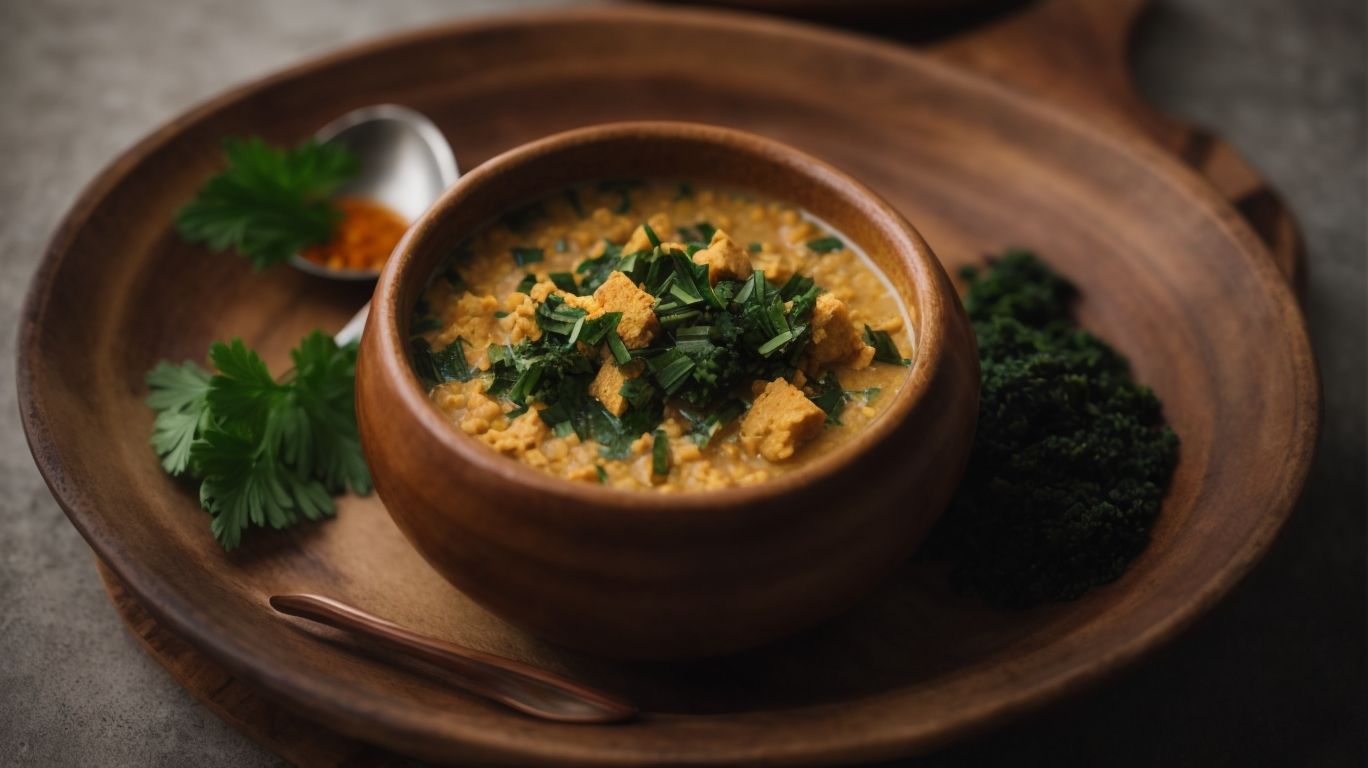
Credits: Poormet.Com – John Hill
For serving Egusi Soup with Ugu Leaf, consider pairing it with complementary dishes to enhance the overall taste and aroma experience.
One great pairing option for Egusi Soup with Ugu Leaf is to serve it alongside some freshly cooked white rice, which balances the richness of the soup with its subtle flavor.
To further elevate the dining experience, you can also add some plantains on the side, either fried or roasted, to bring a hint of sweetness that enhances the savory flavors of the soup.
The earthy notes of the Ugu leaf in the soup can be complemented by a side of steamed vegetables such as broccoli or carrots, providing a contrast in textures and tastes.
Serving Suggestions
When serving the Egusi Soup with Ugu Leaf, focus on presentation to create an enticing dish that captivates both visually and aromatically.
One effective technique is using garnishes strategically placed on top of the soup to add a pop of color and texture, enhancing the overall presentation. Consider using stylish serving bowls or plates that complement the vibrant colors of the soup and Ugu leaf.
To elevate the aroma, serve the soup steaming hot in order to release its full fragrance. This can be further enhanced by adding a sprinkle of fresh herbs or spices just before serving to invigorate the senses and create an inviting aroma that wafts through the air.
Remember, the first impression is crucial when it comes to food, so presenting the Egusi Soup with Ugu Leaf in an aesthetically pleasing manner not only entices the eyes but also sets the stage for a delightful sensory experience.
Pairing Suggestions
Consider pairing the Egusi Soup with Ugu Leaf with dishes that balance and complement its flavors, creating a harmonious taste experience.
When looking to enhance the meal further, you could opt for dishes that provide a contrast in texture to the rich and velvety Egusi soup, such as a crunchy plantain or yam dish. Balance is key, so consider pairing the soup with a light and refreshing side salad to complement the depth of the flavors. For a complete dining experience, you might also want to include a fragrant side of Jollof rice that adds another layer of complexity to the overall taste profile.
Frequently Asked Questions
How to Cook Egusi Soup With Ugu Leaf?
Egusi soup with ugu leaf is a delicious and popular Nigerian dish. Here are some frequently asked questions and answers on how to cook this flavorful soup.
What are the ingredients needed to cook Egusi Soup With Ugu Leaf?
The main ingredients for egusi soup with ugu leaf are egusi (melon) seeds, ugu (pumpkin) leaves, and assorted meats or fish. Other ingredients include palm oil, onions, peppers, and various seasonings.
Can I use frozen ugu leaves to make Egusi Soup?
Yes, you can use frozen ugu leaves to make egusi soup. Just make sure to thaw and squeeze out excess water before adding to the soup.
How do I prepare the egusi (melon) seeds for Egusi Soup With Ugu Leaf?
To prepare the egusi seeds, you can either soak them in hot water for 10 minutes or roast them in a pan until they release their natural oils. Then grind them into a powder and set aside for later use.
Is it necessary to use palm oil in Egusi Soup With Ugu Leaf?
Yes, palm oil is an important ingredient in egusi soup as it adds flavor and color to the dish. However, you can use a smaller amount if you prefer a healthier option.
Can I make Egusi Soup With Ugu Leaf vegetarian or vegan?
Yes, you can make a vegetarian or vegan version of egusi soup by omitting the meat and using vegetable broth instead of meat broth. You can also substitute the palm oil with a different oil of your choice.

